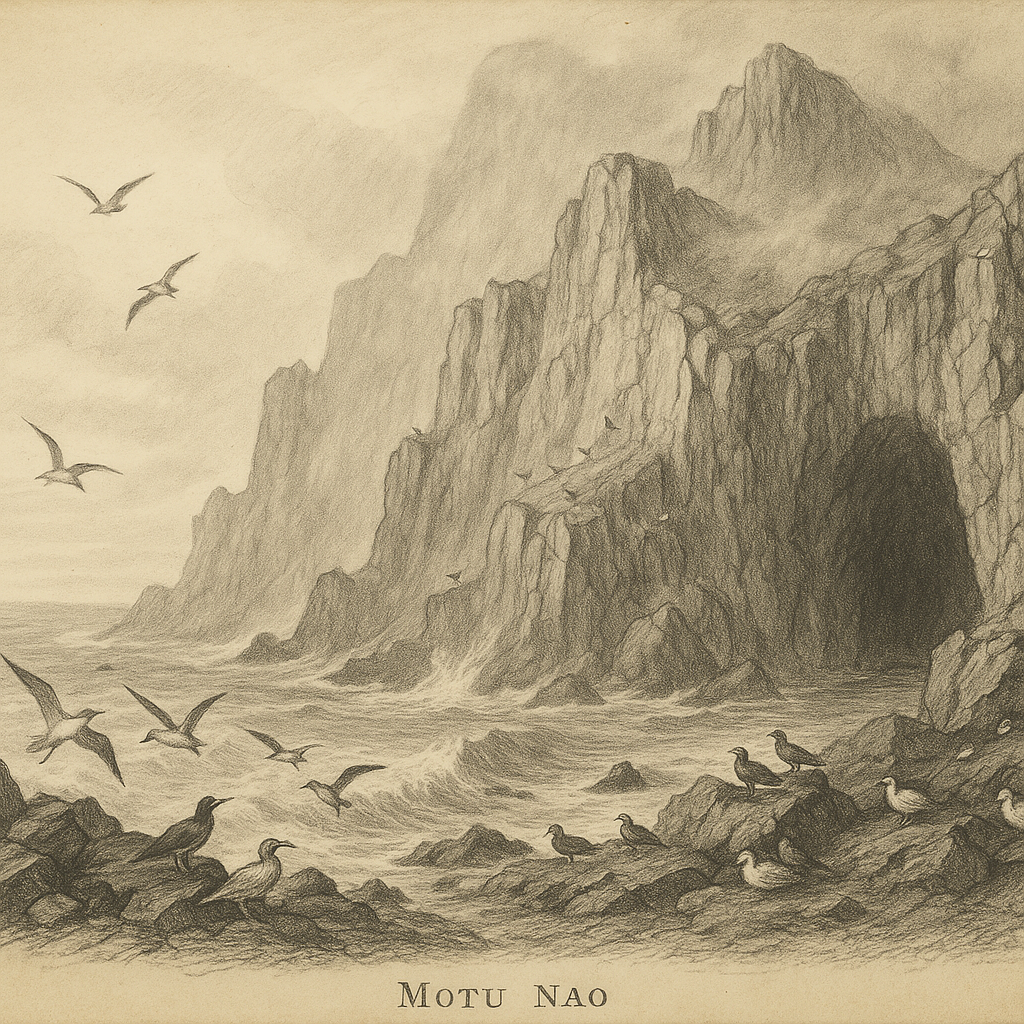Introduction to Motu Nao
Motu Nao is a little-known, remote island nestled in the heart of the South Pacific Ocean. Isolated from mainland civilization, Motu Nao exudes an air of mystery and pristine natural beauty. Though rarely visited, its rugged cliffs, hidden beaches, and untouched biodiversity make it a captivating destination for scientists, explorers, and storytellers alike.
Geographical Location and Formation
Motu Nao lies approximately 1,400 kilometers southeast of Tahiti and is considered one of the southernmost islands in the Marquesas archipelago, part of French Polynesia. Measuring just 3.5 kilometers in length and 1 kilometer at its widest point, the island rises steeply from the sea, with its highest elevation reaching nearly 360 meters.
The island is volcanic in origin, formed millions of years ago through tectonic activity and magma eruptions associated with the Pacific Plate moving over a volcanic hotspot. Unlike many of its neighboring islands that have lagoons and coral reefs, Motu Nao presents a sheer, unwelcoming coastline, marked by steep basalt cliffs, sea-caves, and sparse vegetation.
Climate and Ecosystem
Despite its tropical latitude, Motu Nao experiences a unique microclimate. The island is frequently shrouded in mist, and rainfall is highly seasonal. Its ecosystem is fragile but fascinating. Due to its isolation and harsh terrain, flora and fauna have evolved with little human interference. The steep slopes are covered with hardy shrubs, windswept grasses, and scattered native trees, many of which are endemic to the Marquesas region.
Motu Nao supports nesting colonies of seabirds such as the blue-grey noddy, masked booby, and several species of shearwaters. Its waters teem with marine life, including reef sharks, spinner dolphins, and a range of colorful reef fishes that populate the surrounding submerged shelves.
Human Presence and Accessibility
Historically, Motu Nao was never permanently inhabited, likely due to its inaccessibility and lack of fresh water sources. Archaeological evidence suggests that it may have been visited by early Polynesians for brief periods, possibly during voyages between islands or as a site of spiritual significance.
Today, Motu Nao remains uninhabited. Access is extremely limited and typically carried out by chartered boats with experienced captains familiar with the treacherous waters. The island has no harbors, and landing is only possible under calm sea conditions. Due to conservation concerns, permits are required to visit, primarily issued for scientific or ecological research.
Conservation and Environmental Concerns
Because of its untouched environment, Motu Nao is a key focus for conservation groups. Efforts have been made to study its native bird populations, assess marine biodiversity, and monitor the impact of climate change. Unlike other islands in the region, Motu Nao has never been subjected to extensive colonization or the introduction of invasive species, which provides researchers with a rare view of a near-pristine South Pacific ecosystem.
To preserve its delicate environment, French Polynesian authorities have designated the island as a protected conservation site. Entry is restricted, and environmental impact assessments are required for any proposed research visits.
Interesting Facts About Motu Nao
– Motu Nao is one of the few islands in the Marquesas group that lacks a lagoon or reef system, owing to its steep topography.
– Satellite images have revealed a number of unexplored sea caves along its northern cliffs, attracting attention from speleologists and marine biologists alike.
– During annual bird surveys, ornithologists have discovered several species of petrels nesting exclusively on Motu Nao’s cliffs, suggesting that the island may be a critical sanctuary for seabirds in the South Pacific.
– The island’s name, “Motu Nao,” loosely translates from Marquesan as “island of silence” or “the desolate island,” which reflects its mystery and isolation.
– A rare species of land snail, thought to be extinct elsewhere in French Polynesia, has recently been rediscovered on the island, generating considerable excitement in conservation circles.
Legends and Cultural Significance
Though uninhabited, Motu Nao occupies a unique place in Marquesan and broader Polynesian mythology. According to local oral traditions, the island served as the mythical resting place of the god Tūmatauenga, the deity of war and human activities. It is said that after creating conflict among the first peoples of the islands, Tūmatauenga retreated to Motu Nao to reflect in solitude, making the island sacred yet forbidden.
Other legends speak of a hidden cave on Motu Nao, the “Cavern of Echoes,” where the souls of ancient navigators rest. Fishermen from nearby islands sometimes offer chants toward Motu Nao during sea voyages, acknowledging its spiritual weight and asking for protection on the vast ocean.
These tales, passed down through generations, have kept alive the mystique of Motu Nao, further protecting it from overexposure and maintaining its status as one of the most enigmatic islands in the Pacific.
Conclusion
Motu Nao remains one of the last truly wild places in the Pacific—a rugged, silent sentinel amidst the waves that offers a glimpse into the untouched natural world and the rich cultural lore of Polynesia. Its remote and inhospitable features have paradoxically preserved its beauty and importance, making it a symbol of isolation and ecological significance. Whether viewed through the lens of science, mythology, or pure wonder, Motu Nao continues to captivate the imagination of those who learn of it.



